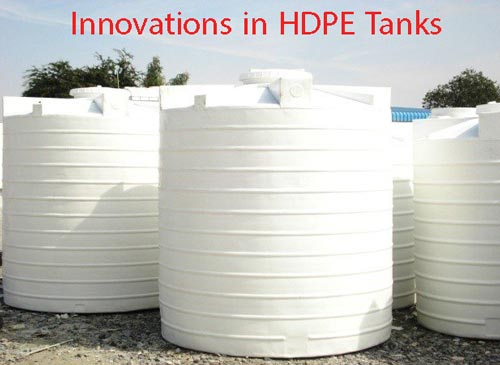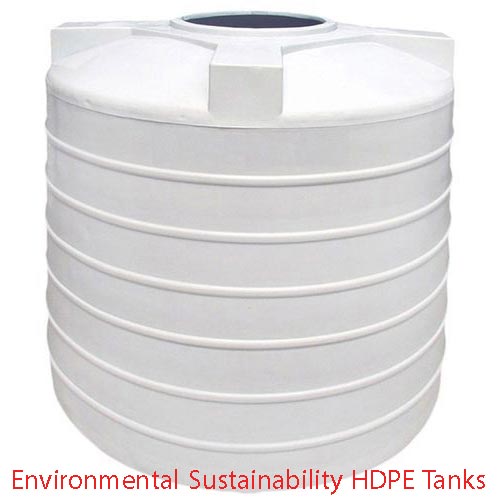Innovations in HDPE Tanks: Revolutionizing Storage Solutions
Introduction
High-density polyethylene (HDPE) tanks have emerged as a revolutionary solution for a wide range of storage requirements. These tanks offer exceptional durability, chemical resistance, and versatility, making them the preferred choice for industries such as agriculture, water treatment, chemicals, and oil and gas. Over the years, advancements in HDPE tank technology have significantly enhanced their performance, enabling safer and more efficient storage solutions. In this article, we will explore the latest innovations in HDPE tank design, materials, and manufacturing processes, and discuss their impact on various industries.

1. Advanced Material Compositions
The first significant innovation in HDPE tank technology lies in the development of advanced material compositions. Traditionally, HDPE tanks were made using standard HDPE resin. However, manufacturers have now introduced specialized resins that possess enhanced characteristics, such as improved impact resistance, higher tensile strength, and superior chemical resistance. These advanced materials provide increased longevity and durability to the tanks, allowing them to withstand harsh environments and various chemical substances.
Moreover, the incorporation of UV stabilizers in the material composition has greatly improved the tanks' resistance to ultraviolet radiation. This advancement is particularly beneficial for outdoor storage applications, where exposure to sunlight can cause degradation and premature aging. The enhanced UV resistance ensures that the tanks retain their structural integrity and functionality, even when subjected to prolonged exposure to sunlight.
2. Innovative Tank Design
HDPE tank design has witnessed notable advancements, leading to improved structural integrity, efficiency, and ease of use. One of the notable design innovations is the development of seamless tanks. Traditionally, HDPE tanks were fabricated by joining individual panels, which created potential weak points at the seams. However, seamless tanks are now manufactured using advanced rotational molding techniques, resulting in a single-piece construction without any vulnerable joints. This design eliminates the risk of leakage, enhances the tank's structural integrity, and reduces maintenance requirements.
Furthermore, manufacturers have introduced innovative features to enhance the functionality and convenience of HDPE tanks. These include integrated fittings and connections, which eliminate the need for additional external components and reduce installation time. Additionally, the incorporation of molded-in tie-down slots and lifting lugs simplifies transportation and installation processes, ensuring secure and hassle-free handling.
3. Increased Customization Options
Another significant innovation in HDPE tank technology is the increased level of customization options available to users. Manufacturers now offer a range of sizes, shapes, and configurations to cater to diverse storage requirements. This customization allows users to optimize their storage solutions by selecting tanks that perfectly fit their available space and specific application needs.
Additionally, advanced manufacturing techniques, such as computer-aided design (CAD) and three-dimensional modeling, enable the creation of complex tank geometries. This allows for the incorporation of specialized features, such as baffles, partitions, or specific inlet/outlet arrangements, to accommodate unique storage and processing requirements. The ability to customize HDPE tanks ensures that industries can achieve efficient and tailored storage solutions, enhancing their overall operational efficiency.
4. Environmental Sustainability
In recent years, there has been a growing emphasis on environmental sustainability across industries. HDPE tanks have responded to this need by incorporating eco-friendly features and manufacturing processes. One notable innovation is the use of recycled HDPE material in tank production. By utilizing post-consumer or post-industrial recycled HDPE, manufacturers reduce their reliance on virgin materials and contribute to the circular economy.
Furthermore, advancements in tank manufacturing techniques have led to reduced energy consumption and emissions. Modern rotational molding processes employ energy-efficient equipment and utilize recycled heat sources, significantly minimizing the environmental footprint associated with tank production. These sustainability-focused innovations make HDPE tanks an attractive choice for environmentally conscious industries.

5. Enhanced Monitoring and Safety Systems
Safety is of paramount importance in storage applications, especially
when dealing with hazardous materials. Innovations in HDPE tank technology have led to the integration of advanced monitoring and safety systems, ensuring a secure storage environment. One such development is the inclusion of leak detection sensors that can alert operators in real-time about any potential leaks or spills. This feature helps prevent accidents, minimize product loss, and safeguard the surrounding environment.
Additionally, advancements in digital technology have facilitated the implementation of remote monitoring systems. These systems allow operators to monitor tank levels, temperature, pressure, and other critical parameters from a centralized location. Real-time data analytics and predictive algorithms enable proactive maintenance and optimize storage operations, reducing downtime and enhancing overall efficiency.
Conclusion
The continuous innovations in HDPE tank technology have revolutionized storage solutions across various industries. The development of advanced material compositions, innovative tank designs, increased customization options, and focus on environmental sustainability have significantly enhanced the performance, durability, and safety of HDPE tanks. Furthermore, the integration of monitoring and safety systems ensures secure storage environments and streamlined operations.
As industries continue to evolve and face new challenges, HDPE tanks are poised to adapt and provide even more advanced solutions. By embracing technological advancements, manufacturers and users of HDPE tanks can further optimize storage practices, drive operational efficiency, and contribute to a sustainable future.
Read more:
Advantages of Polyethylene Tanks:
Polyethylene Septic Tank
Polyethylene Pipe | HDPE PIPES
Polyethylene Pipe (PE pipe)
Polyethylene fittings
Polyethylene manhole